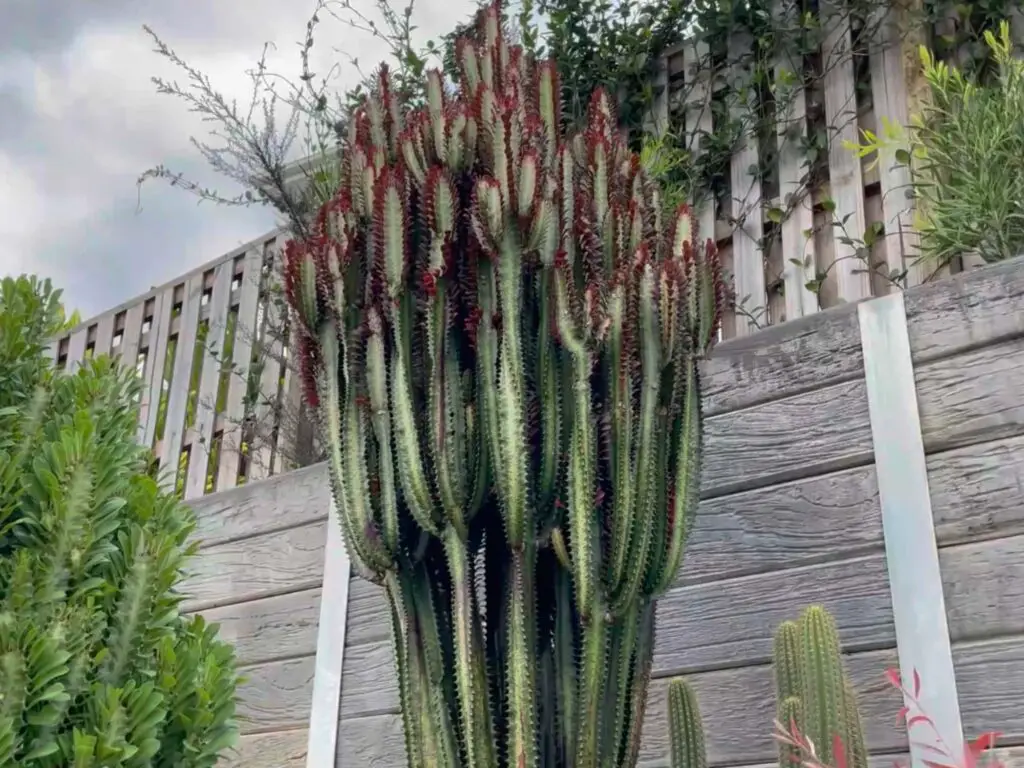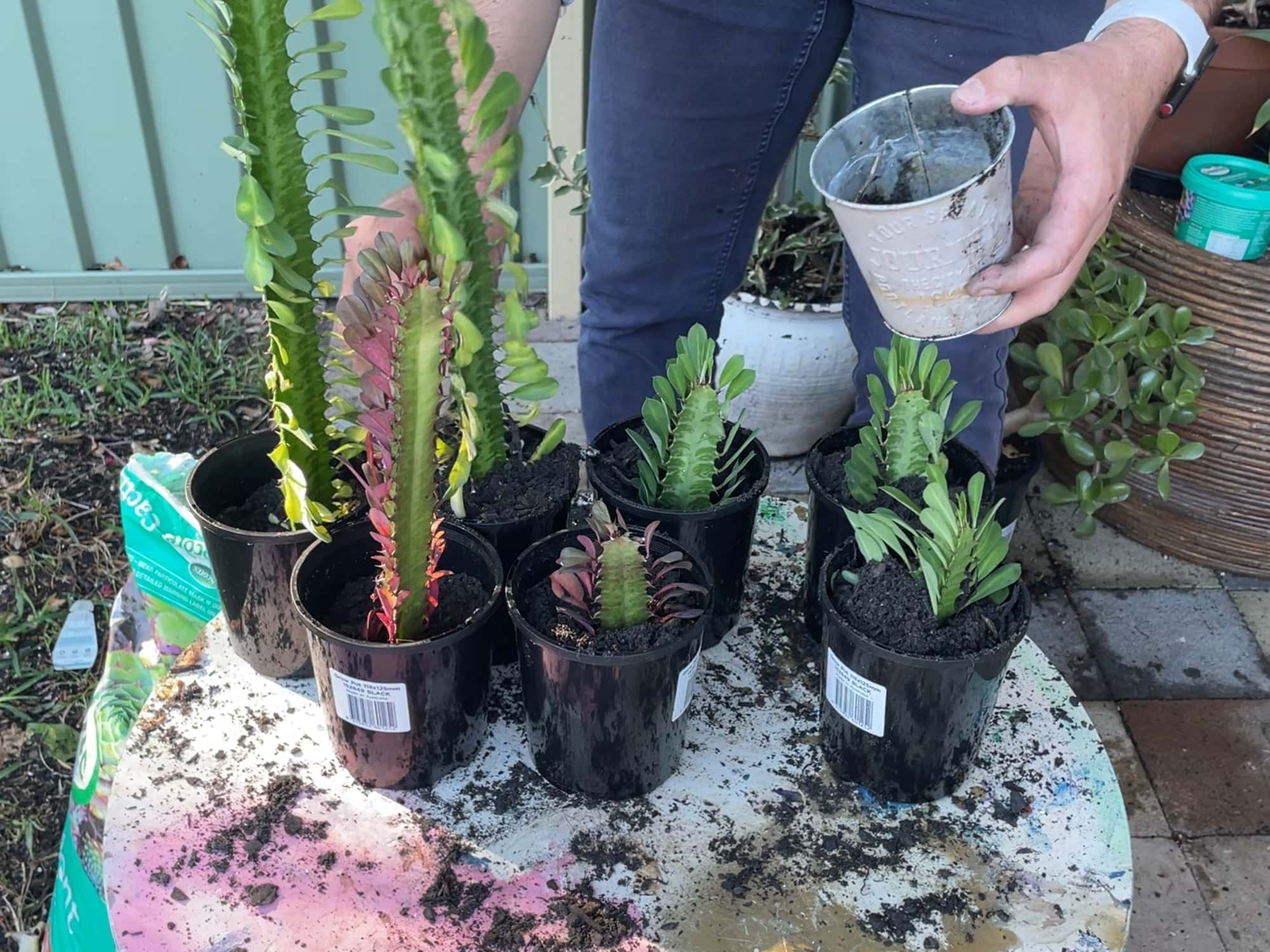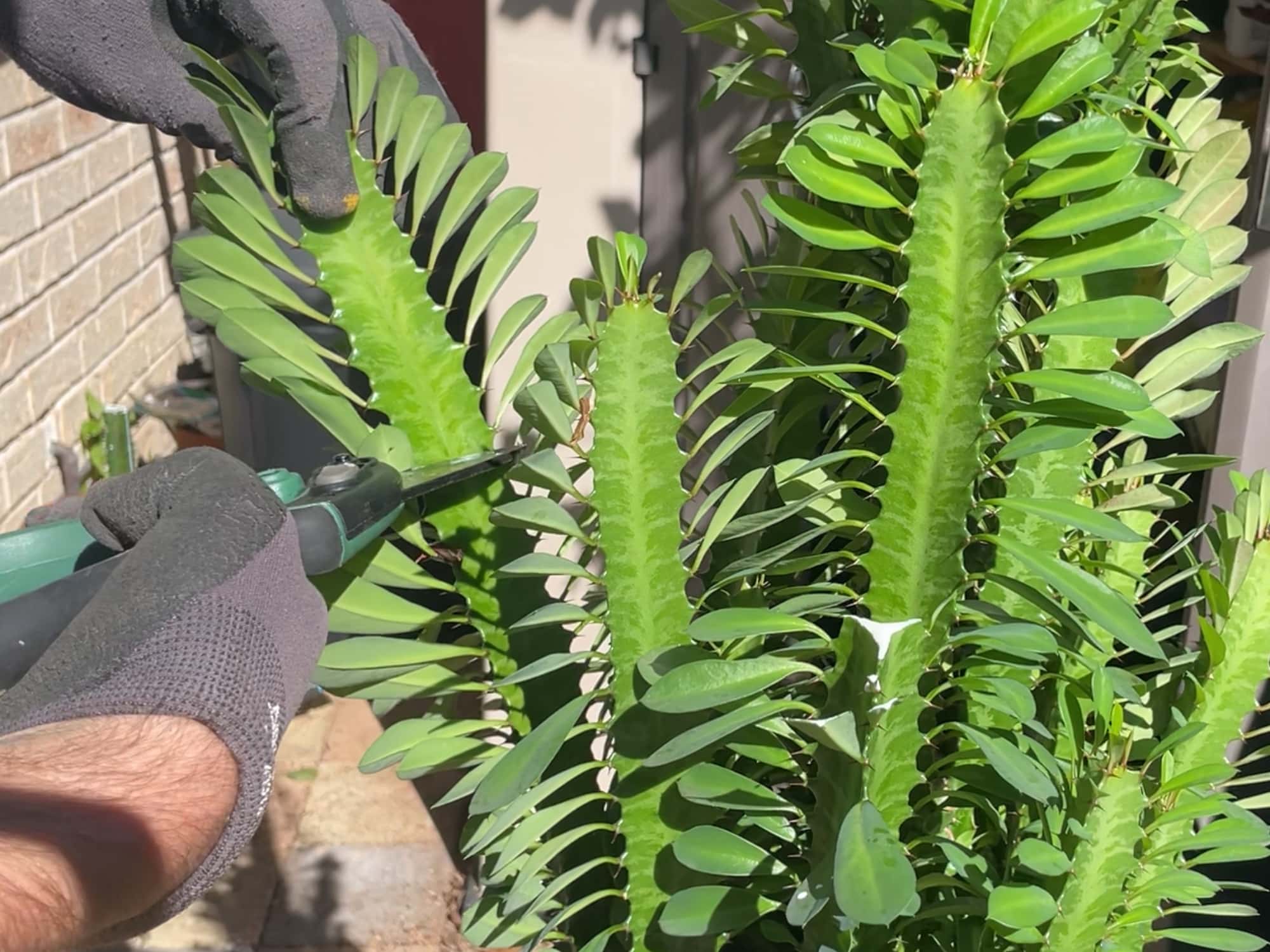To keep your African milk tree healthy and shaped in a style you like, it is important to prune your African milk tree each year.
In this blog, I will explain how I prune my African milk tree and what tips and tricks you need to consider when doing it yourself.
Reasons for Pruning African Milk Trees
There are many reasons why you may be pruning your African milk tree. Things such as:
Plant Health and Growth
If your plant has dying branches, or if some branches are suffering from an insect or pest infestation, one way to fix this is to just cut the affected branches off the plant.
Pruning can also encourage new growth and branches, which encourages it to be a stronger and more vigorous growing plant.
These plants also grow small root balls and can become top-heavy if it’s foliage becomes too bushy. Pruning helps keep the balance between the plant’s foliage and root ball which ensures that it does not outgrow its root system and can properly feed itself the necessary nutrients and water from the soil.
Appearance
If you want your African milk tree to look symmetrical and balanced, then you will need to prune it each year to remove any long and out-of-place branches, to shape it to your desired shape.
Pruning also keeps the height of the plant in check, which could be important to you if you are growing yours indoors.

When to prune
The best time to prune an African milk tree is during the plant’s growing season, which is in Spring or early Summer. Pruning during the growing season will allow the plant to recover from the pruning.
If you were to prune during the winter when the plant is dormant, it could get stressed out and make it more susceptible to disease.
How to Prune Your African Milk Tree
-
Preparation for pruning
The tools that you will need are: secateurs, gloves, and safety glasses. The safety equipment is to stop th eplants milky white sap from getting on your skin, causing a possible reaction.
If in a pot, more it outside where you will have plenty of room to assess the plant and prune it.
-
Assess the plant

Before you start cutting, first step back and assess what branches need to be cut off. This will be dictated by the desired shape you want the plant to be.
Also assess if there are any unhealthy branches or any pest infections or diseases that need to be addressed. The easiest way to fix issues like this it to simply cut the branch off.
-
Prune the plant

Once you have decided which branches you want to cut off, using a sharp and clean pair of secateurs of a utility knife, start cutting the branches.
Cut the branches at a 45 degree angle, running away from the plant. This will help water to run off the cut ends, reducing the chance for rot.
-
Care after pruning

Once you have finished pruning your African milk tree, let the plant sit for a few days before you water it.
If you do not want to keep any of the cutting to propagate them, make sure you continue to wear your gloves to protect your skin from coming into contact with the white milk sap.
-
Propagate cutting (optional)

If you wish to, you can propagate the cuttings and grow more plants for free. You just need some pots and succulent style potting mixture, and to read my blog post on how to propagate these African milk trees.
Tools:
- Secateurs
- Gloves
- Safety glasses
Materials: Succulent potting mix Grow pot
Ongoing care
Once you have finished pruning your plant, you need to give it the proper care so it thrives and continues to be a healthy plant.
- Watering. Be sure not to overwater or underwater your plant. Wait for the soil to dry out between watering (approximately every 1 to 2 weeks during the growing season).
- Fertilizing. You should fertilize at least once at the start of the growing season (Spring). If you remember to, fertilize every one to two months until the end of summer.
- Sunlight. These plants love direct sunlight. If it is growing indoors, make sure it is somewhere that will receive at least 6 hours of direct sunlight.
- Soil. The African milk tree is a succulent and likes a succulent-style potting mixture, which has good drainage. These plants do not do well in overly wet soil.
Regularly monitor your plant’s health and address any issues as they happen. This will ensure your plant gets to live a long time and get to show off its beauty in your home.

